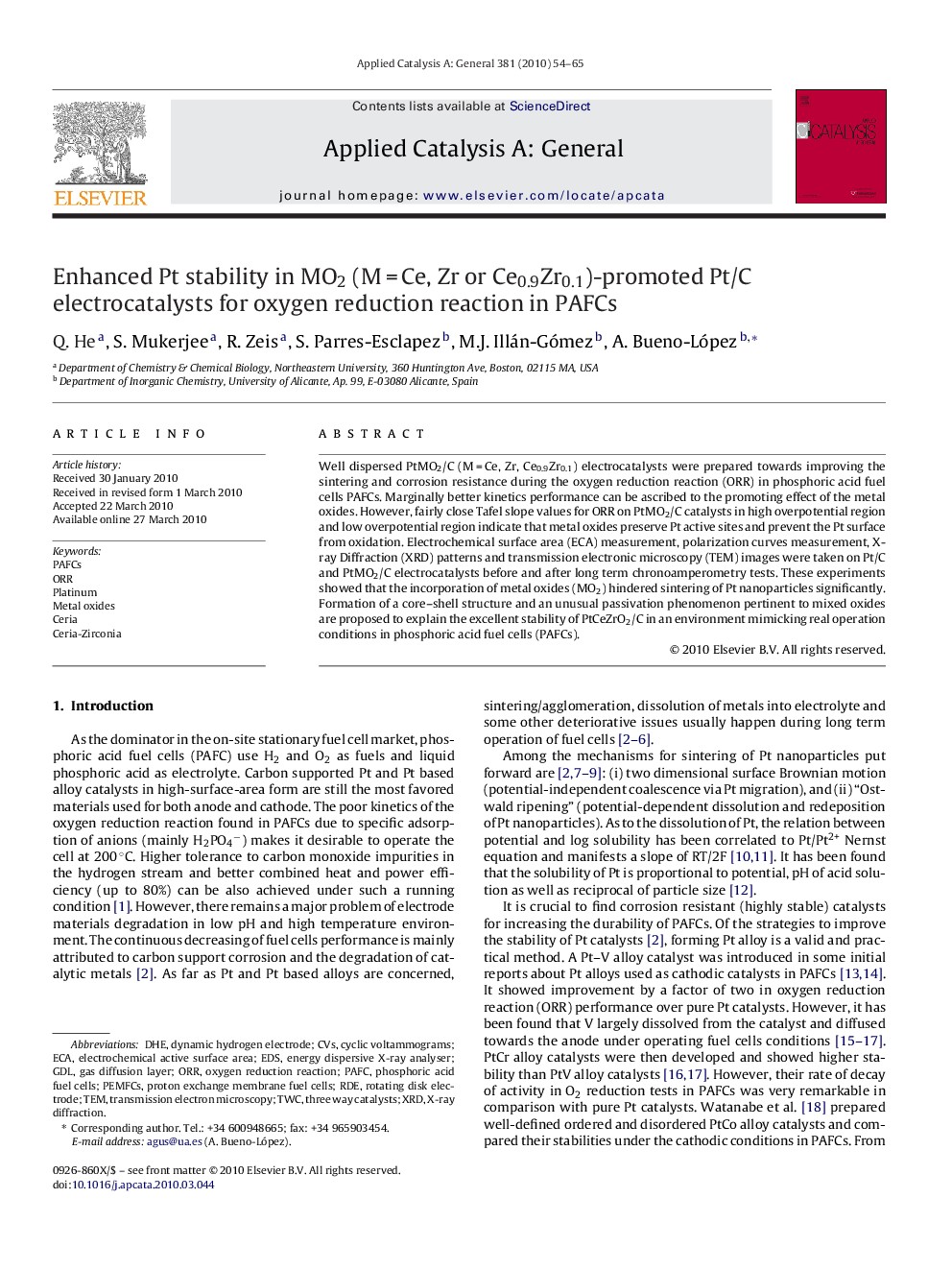| Article ID | Journal | Published Year | Pages | File Type |
|---|---|---|---|---|
| 42027 | Applied Catalysis A: General | 2010 | 12 Pages |
Well dispersed PtMO2/C (M = Ce, Zr, Ce0.9Zr0.1) electrocatalysts were prepared towards improving the sintering and corrosion resistance during the oxygen reduction reaction (ORR) in phosphoric acid fuel cells PAFCs. Marginally better kinetics performance can be ascribed to the promoting effect of the metal oxides. However, fairly close Tafel slope values for ORR on PtMO2/C catalysts in high overpotential region and low overpotential region indicate that metal oxides preserve Pt active sites and prevent the Pt surface from oxidation. Electrochemical surface area (ECA) measurement, polarization curves measurement, X-ray Diffraction (XRD) patterns and transmission electronic microscopy (TEM) images were taken on Pt/C and PtMO2/C electrocatalysts before and after long term chronoamperometry tests. These experiments showed that the incorporation of metal oxides (MO2) hindered sintering of Pt nanoparticles significantly. Formation of a core–shell structure and an unusual passivation phenomenon pertinent to mixed oxides are proposed to explain the excellent stability of PtCeZrO2/C in an environment mimicking real operation conditions in phosphoric acid fuel cells (PAFCs).
Graphical abstractPtMO2/C (M = Ce, Zr, Ce0.9Zr0.1) electrocatalysts were prepared towards improving the sintering and corrosion resistance under the severe conditions of the oxygen reduction reaction (ORR) in PAFCs (85%H3PO4, 110 °C). MO2 hindered sintering of Pt nanoparticles significantly during long term chronoamperometry test, and the best results were obtained with the mixed oxide (Pt Ce0.9Zr0.1O2/C).Figure optionsDownload full-size imageDownload high-quality image (95 K)Download as PowerPoint slide
